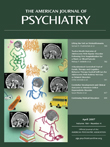Cerebellar Development and Clinical Outcome in Attention Deficit Hyperactivity Disorder
Abstract
Objective: Anatomic magnetic resonance imaging (MRI) studies have detected smaller cerebellar volumes in children with attention deficit hyperactivity disorder (ADHD) than in comparison subjects. However, the regional specificity and longitudinal progression of these differences remain to be determined. The authors compared the volumes of each lobe of the cerebellar hemispheres and vermis in children with ADHD and comparison subjects and used a new regional cerebellar volume measurement to characterize the developmental trajectory of these differences. Method: In a longitudinal case-control study, 36 children with ADHD were divided into a group of 18 with better outcomes and a group of 18 with worse outcomes and were compared with 36 matched healthy comparison subjects. The volumes of six cerebellar hemispheric lobes, the central white matter, and three vermal subdivisions were determined from MR images acquired at baseline and two or more follow-up scans conducted at 2-year intervals. A measure of global clinical outcome and DSM-IV criteria were used to define clinical outcome. Results: In the ADHD groups, a nonprogressive loss of volume was observed in the superior cerebellar vermis; the volume loss persisted regardless of clinical outcome. ADHD subjects with a worse clinical outcome exhibited a downward trajectory in volumes of the right and left inferior-posterior cerebellar lobes, which became progressively smaller during adolescence relative to both comparison subjects and ADHD subjects with a better outcome. Conclusions: Decreased volume of the superior cerebellar vermis appears to represent an important substrate of the fixed, nonprogressive anatomical changes that underlie ADHD. The cerebellar hemispheres constitute a more plastic, state-specific marker that may prove to be a target for clinical intervention.



